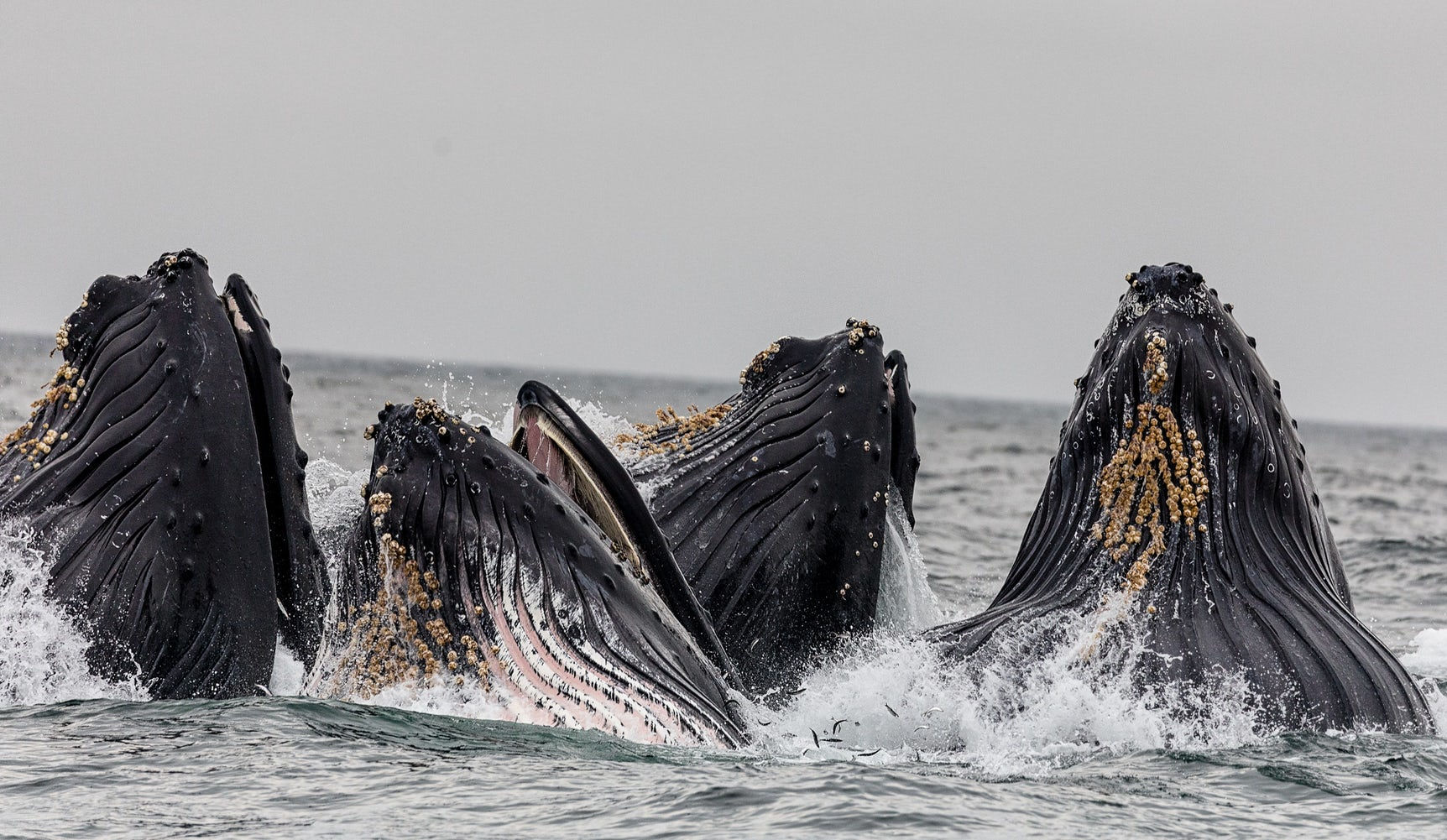
Marine mammals
& Sea Turtles
Context
The Project Area and its surroundings support various marine mammals
by providing important foraging, refuge, and overwintering areas as well as migratory routes.
32 marine mammal species, including 26 cetacean species and 6 seal species, as well as 4 sea turtle species can occur within the RAA and the Project Area. Due to foraging importance of the area, some marine mammals use it seasonally (during June to September), while others are present all year-round.
The sea turtle species that are found in the waters of Newfoundland, 2 are likely to be rare within the Project Area, and the 2 others, leatherback and loggerhead turtles, are expected to be uncommon in the RAA.
Species at Risk (table summary p. 10.30-10.31)
The species at risk are highly mobile, have large distribution ranges, and can undertake long migrations. They are threatened mainly by acoustic disturbances marine pollution, and vessel collisions.
-
5 species of marine mammals within the Project Area are listed under SARA:
-
Blue whale (Atlantic population) - as endangered
-
Fin whale - special concern
-
North Atlantic right whale - as endangered
-
Northern bottlenose whale (Scotian Shelf population) - as endangered
-
Sowerby’s beaked whale - as special concern
-
-
2 species of sea turtles within the Project Area are listed under SARA:
-
Leatherback sea turtle - as endangered
-
Loggerhead sea turtle - as endangered
-
Agency Decision
The Project is not likely to cause significant adverse environmental effects on marine mammals & sea turtles
(with mitigation measures in place)
Adverse effects would be:
-
negligible to low in magnitude
-
localized from the Project Area up to the LAA
-
over upon well abandonment
Predicted Effects
Critique
-
The EIS has adequately assessed the current conditions given the available literature.
-
The mitigation measures provided have been going above the average implementation solutions by establishing speed limits, route restrictions, and monitoring activities.
STRENGTHS
Weaknesses
-
The reliance on MMOs to detect marine mammals and sea turtles during VSP activities has its limitations in terms of accuracy (bad weather conditions, poor training, or lack of experience), and thus should not be the only source of detection and identification of marine life. The EIS did not adequately specified a detailed MMO protocol which has to be reviewed before the start of the project. The EIS did not explicitly state that a third party MMOs should be employed, an important distinction that should not be discarded.
-
Sound emissions, marine pollution, and vessel collisions are concerns that federal authorities, Indigenous peoples, and the public share. However, the EIS and the Agency have not provided the expected rigorous mitigation measures (such as alternatives to air guns), which are essential to reduce the impacts on marine mammals and sea turtles. This is especially concerning given the status of the species at risks that are relevant to the area.
-
The EIS has assessed the effects of the project on marine mammals and sea turtles based on very sporadic and scarce baseline data. This is especially concerning because the Project Area could be used as foraging and/or breeding areas, as well as migratory corridors for marine mammals. Although the EIS recognizes the lack of systematic surveys within the area, and the limited data on hearing impairment and on responses to MODUs, the proposed mitigation, monitoring and follow-up measures are not proportional to the level of uncertainty. The use of other jurisdictions’ research combined with the scientific uncertainty are really hindering the accurate determination of predicted effects. The decision of the Agency to approve the Project before more research can be done is imprudent.
-
Within the EIS, the inclusion of Indigenous peoples in the monitoring and mitigation measures is very much lacking. Although the Agency has required the Proponent to reach out to Indigenous groups during the follow-up programs, such involvement should happen much earlier in the timeline.